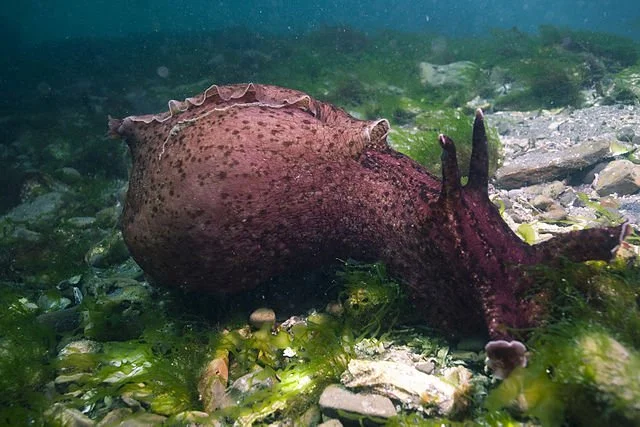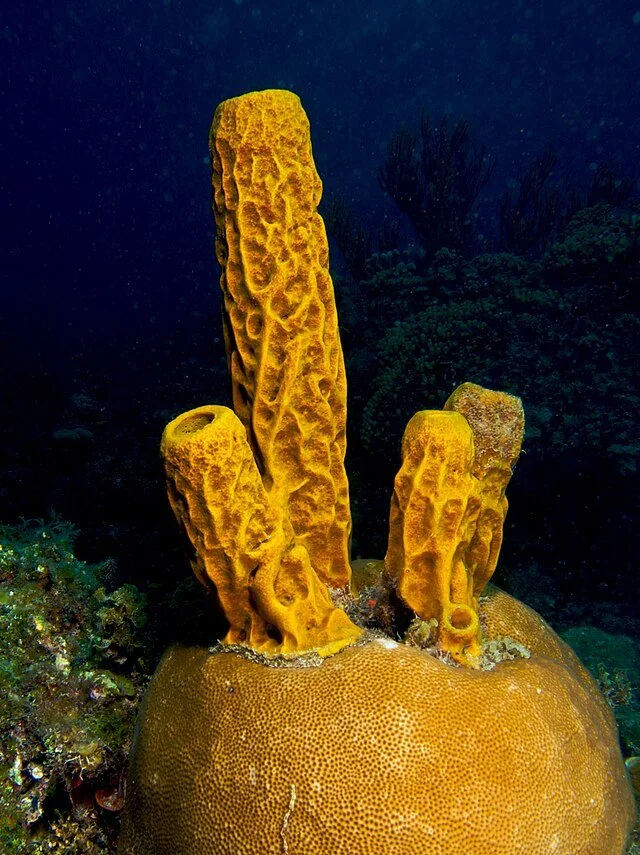We can create tons of life-saving medications from the ocean—as long as we can keep it alive.
A coral reef. Francesco Ungaro, CC0
It has been said that we know less about our oceans than we do about the surface of Mars. We have already discovered more than 200,000 different species, but scientists agree that we have still only barely scratched the surface of what may be down there for us to find.
Some of these creatures are capable of producing life-saving drugs, curing or treating everything from diabetes to certain types of cancer. Most of our current medications come from terrestrial plants and animals, but given that the ocean represents 95% of Earth’s biodiversity, we are somewhere around 300 to 400 times more likely to find the next big cure in the ocean.
But in spite of this enormous potential, the oceans are in severe danger due to climate change, overfishing and pollution. Here are five different ocean creatures that could potentially save your life—and why we need to keep them alive and healthy.
Seahorses
A yellow long-snouted seahorse. Victor Micallef, CC BY-SA 4.0
The first face on our list is a familiar one; seahorses are one of the more famous animals that make their homes on coral reefs, and have proven to be one of the most useful as well. These aquatic equines’ medicinal properties were recorded as long ago as 700 AD, when their extracts were first used in China to cure asthma and arthritis. More recently, seahorses have also been used to treat kidney and liver diseases.
But the population today is larger than ever, so the demand for these treatments is growing every day. Since the 1980s, demand for seahorses in the pharmaceutical industry has dramatically increased, resulting in a frighteningly steep decline in the number still living in the wild. Studies have shown that at least 35% of all species of seahorse are endangered.
This is due primarily to overfishing—aside from the mass harvesting for pharmaceuticals, seahorses are also frequently accidentally caught by commercial fishermen and simply left to die. If this population declines much further, a historically successful treatment for several different diseases may be on the line.
Sea Hares
A sea hare in Monterey Bay. Chad King / NOAA MBNMS, CC0
A much less pleasant animal to look at, sea hares are still incredibly useful. A particular species from the Indian Ocean secretes a chemical that may be able to treat tumors, leukemia, and breast and liver cancer. Although the compound is still undergoing chemical trials, the results are promising and scientists believe the unassuming slug may be our best shot at dealing with many of the trickiest cancers in the human body.
Although sea hares are not currently endangered, they are threatened by ocean acidification and climate change. Also, since they are most commonly found along rocky shorelines, they are at risk from agricultural runoff and coastal development. Though we have not pushed them to extinction quite yet, continuing to develop our shorelines without proper caution could rob us of a very promising treatment for some of our most devastating diseases.
Sea Sponges
A yellow tube sea sponge. Nick Hobgood, CC BY-SA 3.0
There are countless different types of sea sponge and soft coral all over the ocean floor. In the last few decades, as more and more of them are discovered, we have found countless uses for just about every part of them.
One species in particular, known in the scientific community as Tectitethya crypta, has been used to treat HIV and AIDS. The sponge’s fatty acids in particular are a crucial component in many modern medications. Others have been used to treat breast cancer, leukemia, Ebola and even COVID-19. Needless to say, sea sponges are some of the most beneficial animals in the world, and experts say we haven’t even scratched the surface of what else they may be able to do for us.
Sea sponges are some of the most widespread ocean animals in the world, and have existed since before even the dinosaurs—however, that doesn’t mean they are safe from humanity. Deep-sea mining threatens their habitats by destroying the very land that the sponges grow on. Companies have claimed that deep-sea mining is far more environmentally friendly than other processes on land, however, it might only seem this way because we know so little about the ecosystems that sit just above the valuable mineral deposits in the deep sea. If we continue to haphazardly destroy these animals’ homes, countless potential miracle cures could be lost forever.
Corals
A soft coral in Bali. AlexeiAVA, CC BY 4.0
The backbone of all reefs, coral is widely thought of as a simple plant. Shockingly, these stationary structures are actually animals! Tiny polyps, the real minds behind the beautiful skeletal coral, secrete a thin limestone covering that attaches to the seafloor and eventually grows into the twisting and spiraling forms that we’re familiar with. These polyps have been used in the past to facilitate bone growth, and even to replace shattered or fractured bones in the human body. Ground-up corals can also be used to treat, of all things, Alzheimer’s and heart disease.
As well as being the mascot of the reef, coral is also the poster child for ocean acidification. Coral bleaching, the largest problem facing reefs around the world, is when the polyps that make their homes in the coral flee in response to warming waters or high concentrations of carbon. Without their inhabitants, the coral turns white and brittle, and can be broken by the slightest impact. Unsustainable fishing practices have also resulted in the destruction of entire chunks of reefs, whether it be through dynamiting or simply by tearing them up with oversized fishing nets. Besides providing a home for unimaginable numbers of animals and plants, corals are some of the richest sources of medicine and treatments in the ocean.
Sea Squirts
A sea squirt. Nick Hobgood, CC BY-SA 3.0
Sea squirts, despite their unappealing name and unassuming appearance, are being used to treat—and eventually, maybe even cure—one of the most dangerous skin cancers in the world. Found along the coast of almost every major ocean in the world, sea squirts contain a chemical that actually prevents cancer cells from regenerating. However, scientists have not yet figured out how to make this chemical in the lab, meaning they’re relying on harvesting sea squirts to produce the treatment.
Although some sea squirts are incredibly common (even being considered invasive in some places), various human activities threaten their habitats. Much like the sea hare, they live close to the surface on rocky shorelines and along reefs, meaning they’re more at risk from chemical runoff and coastal development. Unless we can take more precautions, harvesting these useful blobs will become much harder.
TO GET INVOLVED
Between global warming, ocean acidification and pollution, the dangers facing marine life can seem overwhelming. But there are many ways that an individual can make a difference and help the ocean survive. Organizations like Coral Guardian and the Reef Life Foundation work tirelessly to maintain reefs around the world with the help of donations and coral adoptions.
There are also countless hazardous waste recycling centers all over the country where you can safely dispose of harmful chemicals that you no longer need, rather than tossing them into landfills. And practicing eco-friendly behavior—avoiding single-use plastic, only applying zinc- or titanium-based sunscreen, and simply helping to pick up litter before it makes its way into the ocean—goes further than you might think.
The ocean is threatened from a million different places, but if we all do our part, it will provide for us for many years to come. There are countless undiscovered plants and animals living down there—there’s no telling what we’ll find next, and how it can help us in return.
Ryan Livingston
Ryan is a senior at The College of New Jersey, majoring in English and minoring in marketing. Since a young age, Ryan has been passionate about human rights and environmental action and uses his writing to educate wherever he can. He hopes to pursue a career in professional writing and spread his message even further.







